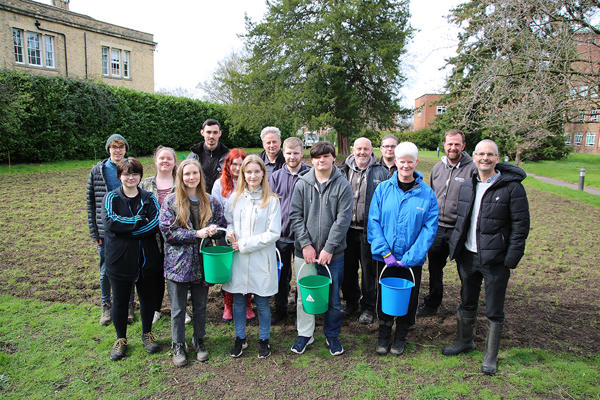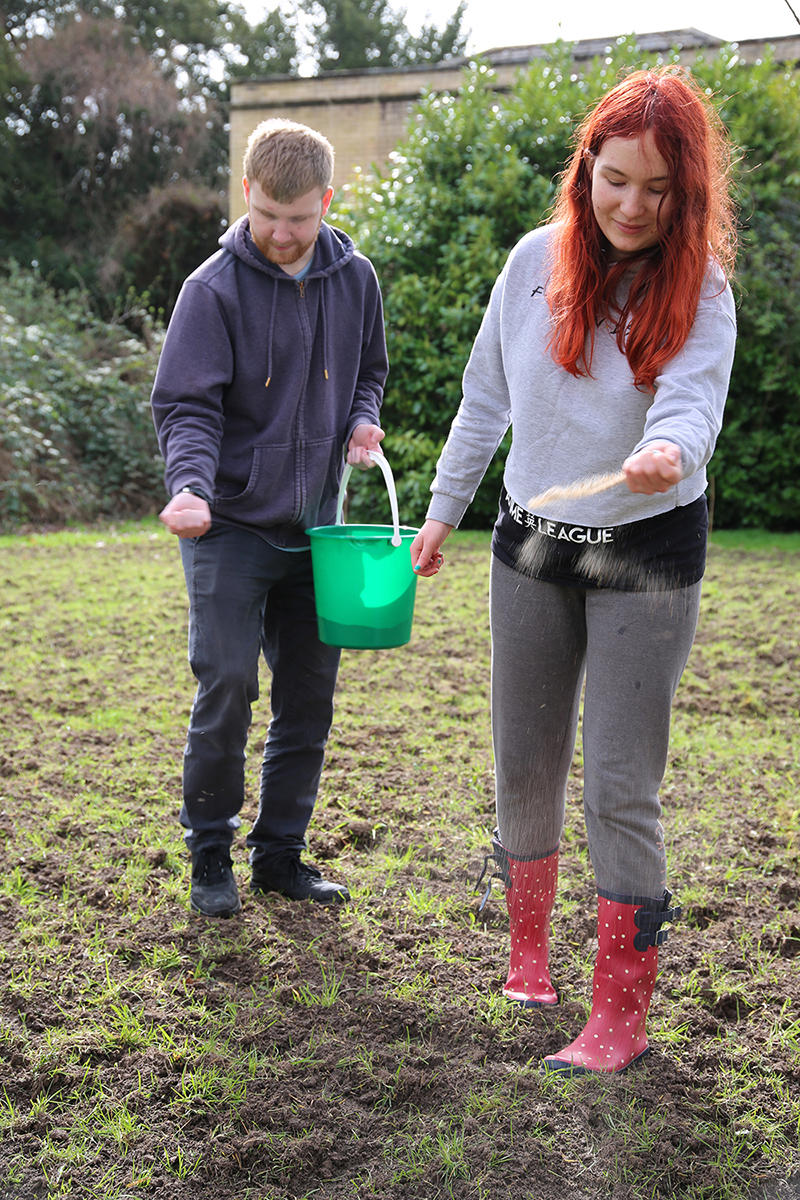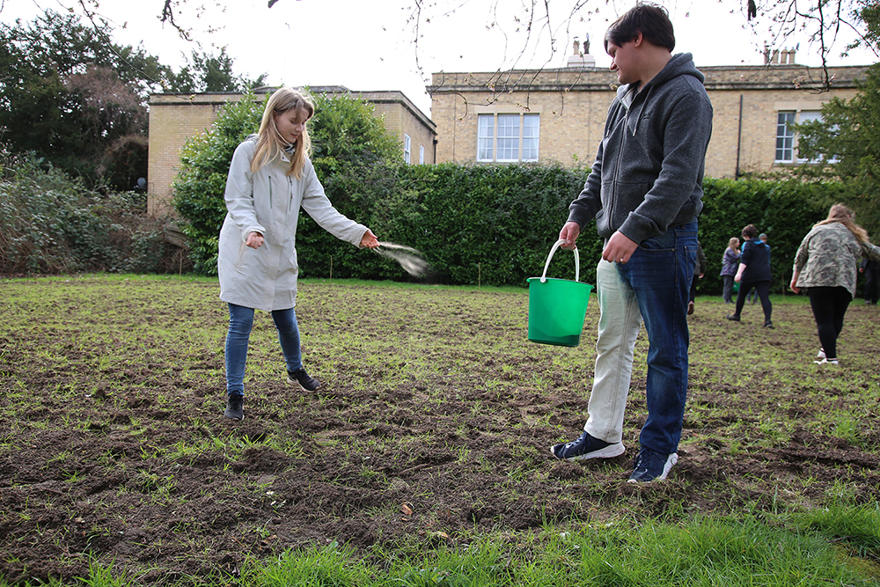Hundreds of wildflowers will soon be providing a habitat for nature to thrive at the University of Worcester as part of a wider wildlife project on campus.
 Students and staff taking part in sowing the wildflower meadow
Students and staff taking part in sowing the wildflower meadow
Students, including those studying on the University’s Environmental Management and Sustainability course, along with staff, have sowed wildflower seeds on land at the University’s St John’s Campus. It is hoped that this meadow and other existing wildflower sites created on campus will play a part in addressing the biodiversity crisis.
Principal Lecturer in Ecology and Environmental Management, Dr Duncan Westbury, who leads the Environmental Management and Sustainability degree and led this project, said: “The UK is now one of the most nature-depleted countries in the world and in turn this reduces our ability to combat climate change. According to the Botanical Society of Britain and Ireland (BSBI), 53 per cent of native plants now have smaller ranges than they did in the 1950s. Worryingly non-native plants now outnumber native species. We must therefore all take some responsibility for the land we occupy and make a space for nature. The University of Worcester is committed to making a difference and this new meadow area is our latest addition to helping wildlife in the region.”

The 2.6kg of seed, consisting of UK native wildflower species, were sowed by hand over an area the size of two and a half tennis courts. It was a mixture of 28 wildflowers, including betony, lady’s bedstraw, field scabious, and musk mallow, as well as five grasses, including crested dog’s-tail and small cat’s-tail.
The resulting plants will be cut to a height of around 8cm throughout this year to encourage the sown species to establish. This means that the first flowers will start to be seen in 2024, and it will then produce a more impressive display.
Sam Williams, a student on the Environmental Management and Sustainability course who was involved in the project, said: “I wanted to be involved in this because I feel it’s important to create more wildflower habitats, which are vital for our pollinators and our food production. It was great to be involved and help give an area of campus a new lease of life.”
The project was made possible with part of a grant from the Natural Networks Programme, which is funded by the European Regional Development Fund, along with further funds from the University.
The Natural Networks Programme, a partnership between Worcestershire County Council and the Worcestershire Wildlife Trust, is a Worcestershire-wide scheme offering grants and advice to projects which aim to create or restore wildlife-rich habitats.

Dr Westbury added that we can all do our bit to help local wildlife. “Whilst we have established a large area on St John’s campus, even a few native wildflower plants dotted amongst a herbaceous border or using bird’s-foot trefoil in hanging baskets all helps,” he added.
This is the latest in a number of biodiversity initiatives at the University. Students and staff created a new wildflower area at the St John’s Campus in March last year, to add to several other wildflower areas on the site. In recent years there have also been schemes to introduce bee hotels, bird and bat boxes, and hedgehog boxes.
Dr Westbury added: “We have created wildflower areas at the University of Worcester primarily to support wildlife, but it is also boosting the mental wellbeing of students and staff. With the recent establishment of two woodland flora areas, wildflowers can now be enjoyed on St John’s campus from spring through to late summer.”